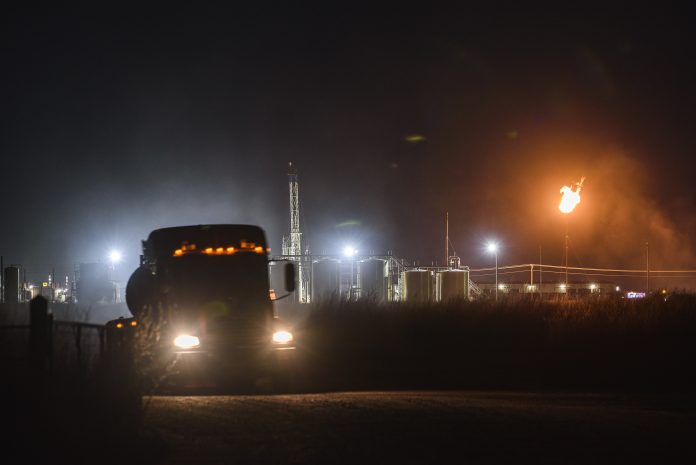The ExxonMobil Corp. has responded to a World Bank report on the worldwide oilfield flaring of methane gas by saying it has eliminated routine flaring in the Permian Basin.
“ExxonMobil has established a track record of setting and achieving aggressive greenhouse gas emission reduction goals,” company spokeswoman Michelle Gray said from Houston. “As a result, we eliminated routine flaring in the Permian Basin, which is home to almost half of our net oil and gas production in the United States.
”We are further reducing flaring in upstream operations and are on track to achieve zero routine flaring across our global upstream operated assets by 2030 in support of the World Bank’s Zero Routine Flaring Initiative,” Gray said.
Guangzhe Chen, vice president for infrastructure of the Washington, D.C.-based World Bank, said worldwide flaring decreased by five billion cubic meters in 2022, its lowest level since 2010, and the U.S. accounted for most of the decline with Nigeria and Mexico.
But the U.S., Nigeria and Mexico were still among the worst offenders along with Russia, Iraq, Iran, Algeria, Venezuela and Libya, which together accounted for nearly three-quarters of flare volumes and under half of global oil production.
“After a decade of stalled progress, global gas flaring volumes fell in 2022 by around three percent, which was a welcome drop especially during a time of concern about energy security for many countries,” Chen said. “We continue to encourage all oil producers to seize opportunities to end this polluting and wasteful practice.
”Two other countries, Kazakhstan and Colombia, stand out for consistently reducing flaring volumes in the last seven years.”
Chen said satellite data showed that decreased Russian gas exports to the European Union did not increase gas flaring in Russia.
”Throughout 2022, the European Union significantly increased its liquefied natural gas imports from the United States, Angola, Norway, Qatar and Egypt and via pipeline from Azerbaijan and Norway,” he said. “Of these countries, only the U.S., Angola and Egypt have made substantial progress in converting associated gas that would otherwise be flared into LNG exports.”
Zubin Bamji, the World Bank’s program manager for its global gas flaring reduction partnership, said he was “concerned by the amount of methane emitted through flaring, particularly from flares that are not working properly.
“Methane is a far more potent greenhouse gas than carbon dioxide in the short term,” Bamji said. “So we are ramping up our efforts to help developing counties tackle methane emissions.”
The GGFRP estimates that 2022 gas flaring released 357 million metric tons of carbon dioxide equivalents, 315 million tons in the form of carbon dioxide and 42 million tons in the form of methane.
“The report also considers the state of the science and the uncertainty surrounding how much methane is released from flaring,” Bamji said. “It finds that methane emissions due to flaring could be significantly higher than previously estimated.
“For example, if the average flare is just five percentage points less efficient at combusting methane, then globally the amount of methane released would be three times higher than currently estimated.”
A metric ton is 2,205 pounds.
The World Bank’s GGFRP is a trust fund and partnership of governments, oil companies and multilateral organizations working to end routine gas flaring at oil production sites around the world.
In partnership with the U.S. National Oceanic and Atmospheric Administration and the Payne Institute at the Colorado School of Mines, it has developed global gas flaring estimates based on observations from two satellites that were launched in 2012 and 2017.
“The advanced sensors of these satellites detect the heat emitted by gas flares as infrared emissions at global upstream oil and gas facilities,” Bamji said.




